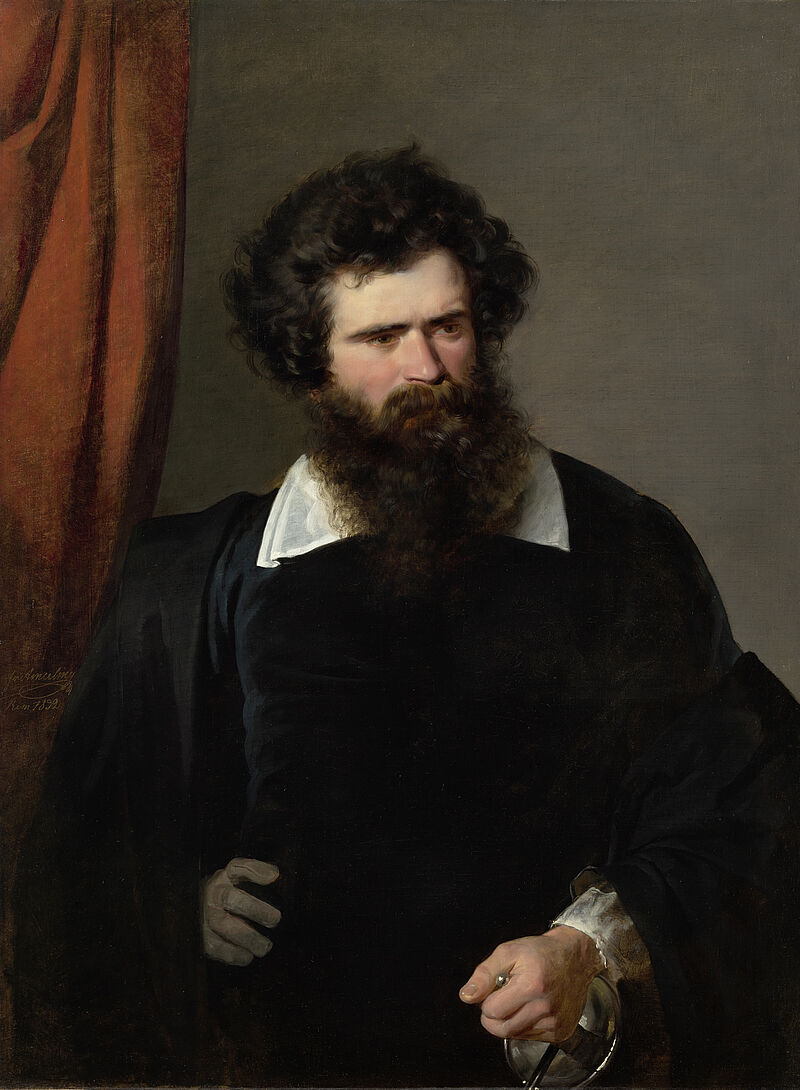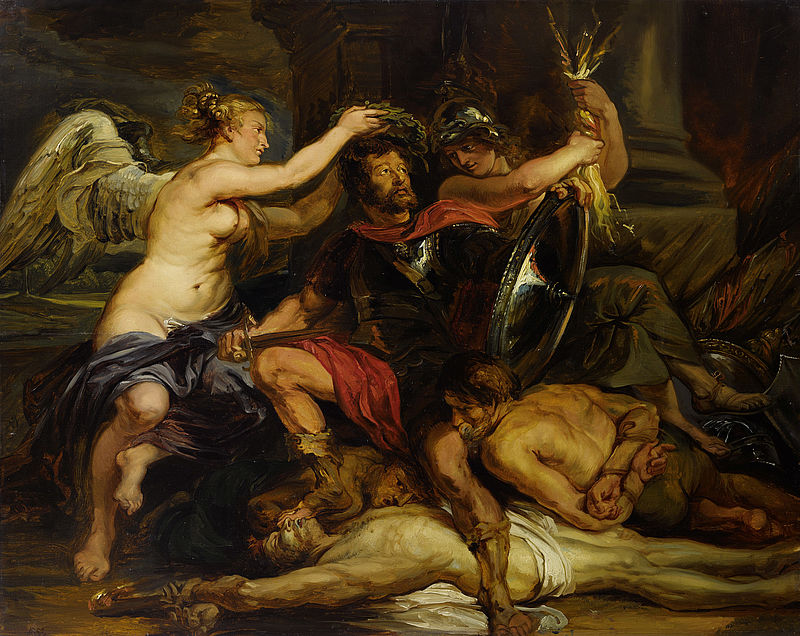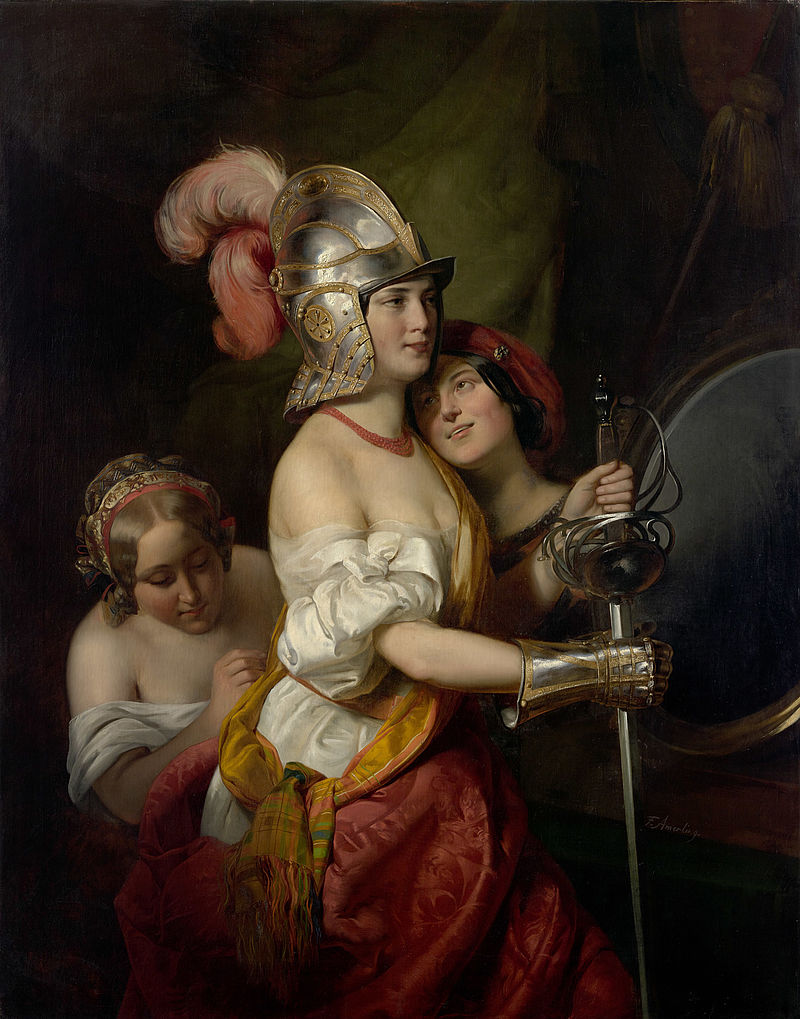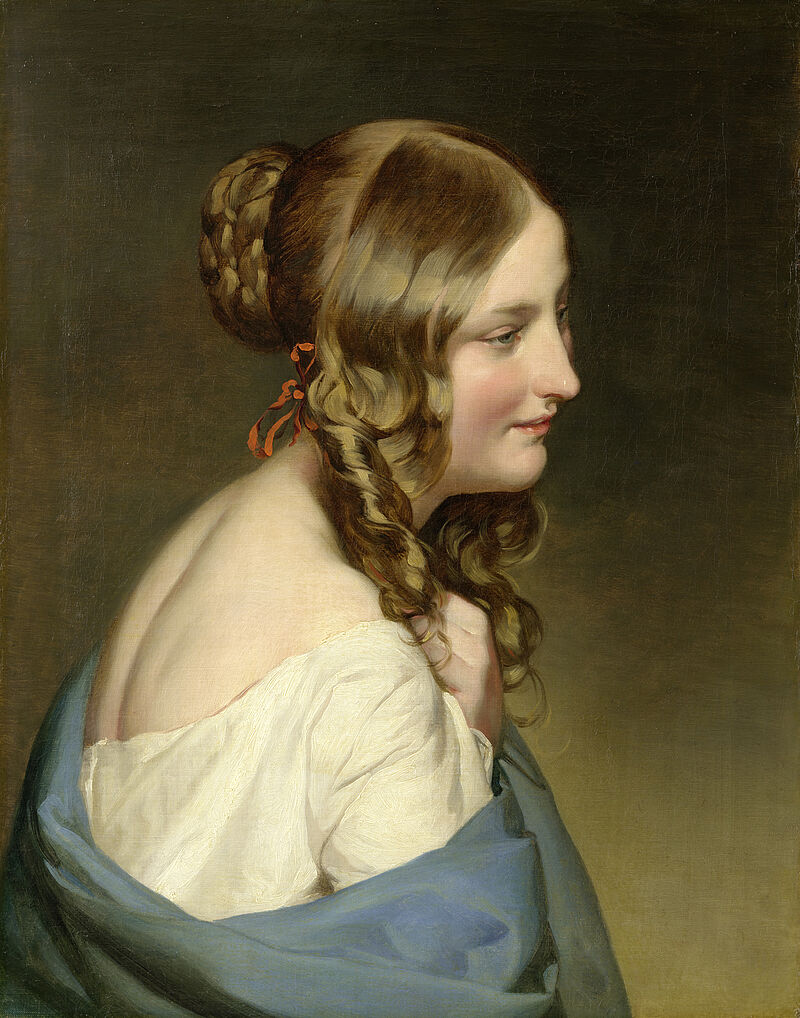Portrait of a gentleman (Male model in Dutch costume)
Friedrich von Amerling (1803 - 1887)
Framesize 130.00 x 106.00 x 12.00 cm
In Friedrich von Amerling’s (1803–1887) half-length Portrait of a Gentleman (1832), the figure is brought into the foreground. The space is defined only by a red curtain – a symbol of prestige, as in Daffinger’s portrait of the child Maria Theresia Isabella,
Archduchess of Austria (Residenzgalerie Salzburg, inv. no. 610).
After Amerling was commissioned in 1832 to paint Emperor Franz I of Austria in Austrian Imperial Regalia, he was much in demand as a portraitist, his special talent lying in his sensitive treatment of faces. He was a master of light distribution and finely gradated colour nuances, similar to contemporary English painting.
In 1827/28, Amerling had spent time studying in London. Also, English artist Thomas Lawrence (1769–1830) was not unknown in Vienna, having travelled to Aachen, Vienna and Rome in 1818–1820 at the behest of Prince Regent George IV, to paint portraits of outstanding personalities and rulers.
The identity of the man in Portrait of a Gentleman has not yet been established. There is good reason to assume that the painting is a character study, as for instance the pose or the clothes, which are in keeping with Dutch 17th-century fashion. This type of study appears to originate in Italian painting – for example in the work of Michelangelo (1475–1564), Caravaggio (1571–1610) or Pietro della Vecchia (1602/03–1678) (Residenzgalerie Salzburg, Inv.-Nr. 313). In addition, during the 19th century performances of “living pictures” (tableaux vivants) were popular; here professional or amateur actors would assume the roles of protagonists in famous paintings – complete with authentic costumes and properties – and remain motionless for a few minutes on a stage. The tableaux vivants originated in theatrical performance practice, in which, from the end of the 18th century, scenes were sometimes “frozen” for special dramatic effect. Finally the individual portrayal prevailed as an art form in its own right, and became a popular motif in both painting and photography.
Habersatter Thomas: Blicke – Posen – Rollenbilder I Eyes – Poses – Roles. In: Ducke Astrid, Habersatter Thomas (Hrsg. I Ed.): Face to Face. Österreichische Porträtmalerei des 19. Jahrhunderts. 19th-century Austrian portrait painting. Residenzgalerie Salzburg I DomQuartier Salzburg 6.6.–29.9.2025. Salzburg 2025, S. I p. 145–147, Abb. I Illus. 2–4
More artworks by Friedrich von Amerling
Crowning the victor (Copy after Peter Paul Rubens (1577–1640), “Crowning the victor”), 1853
Friedrich von Amerling
Inv. no. 597
Download of this artwork is permitted for private use only.
Here you will find our license for non-commercial use.






